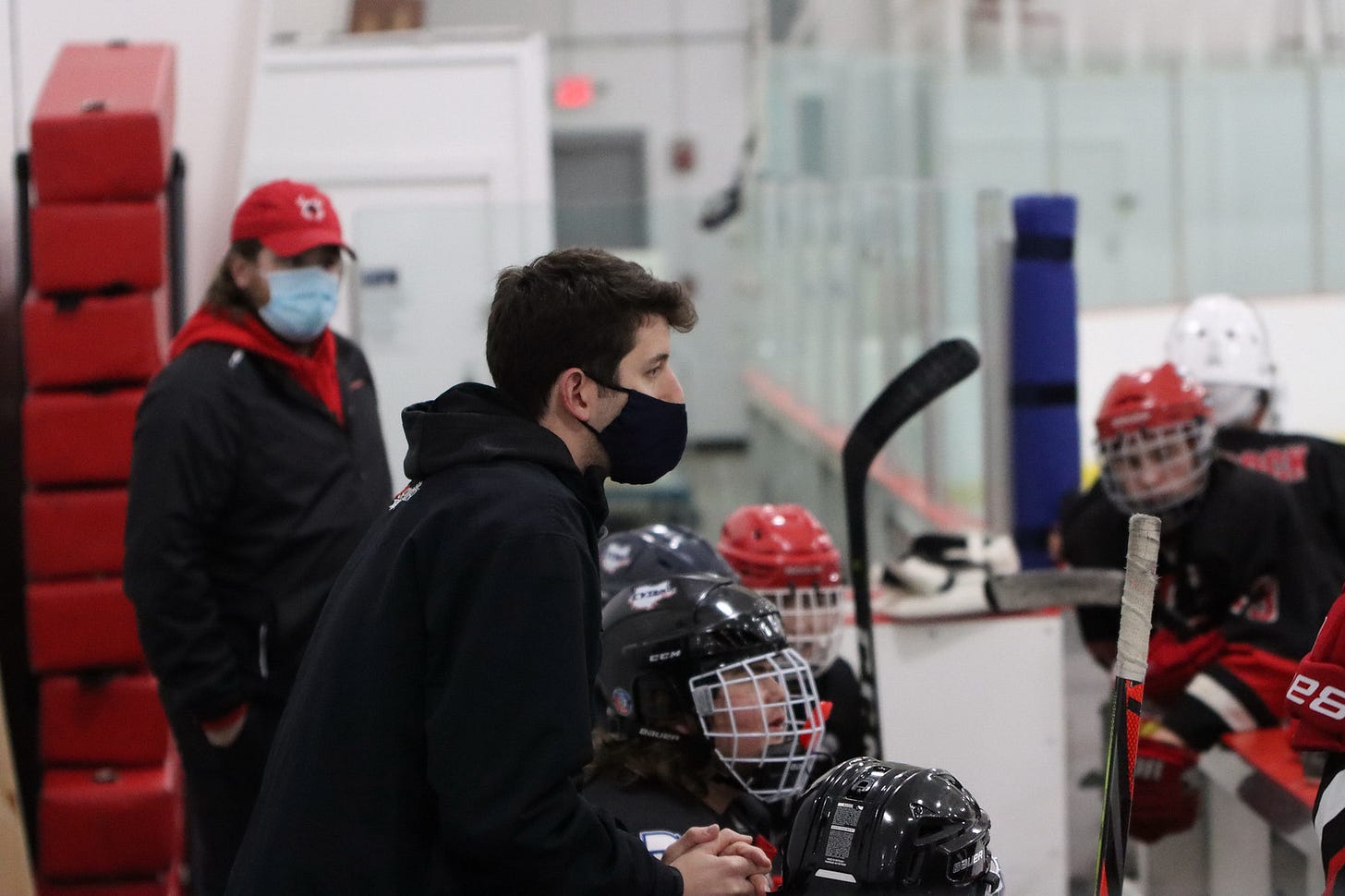Should Practice be Chaotic or Structured?
Striking the appropriate balance between order and disarray in practice planning
When I was a young youth hockey player, I needed to know exactly what was expected of me when performing a drill. Any sort of ambiguity was stressful because I couldn’t get a read on what the coach had in mind. As a ‘pleaser’, my energy was concentrated on completing the drill right, perhaps at the expense of learning how to apply the concept into a game scenario.
Perhaps as a result, when I first started coaching years later, I planned and led practices in a hyper-structured manner. No ambiguity. Starts and stops on the whistle. Everything was scripted, down to the one-hard lap in between drills. There was no room for variance, from the players to the coach.
In Darryl Belfry’s recent book, he discussed how, early on in his career, he would make sure that his players passed the “sweat test”. I didn’t call it that, but in reading the book, I knew exactly what he meant: At the end of the day, could I at least, on the way out of the rink, look the parents in the eye and feel good knowing that the kids worked hard? In hindsight, this was a coping mechanism I used to ensure that the parents were “on my side”. “Did the kids learn a lot?” I sure hope so. But “did they work hard?” Check.
A Word From A Two-Time Stanley Cup-winning Coach
Obviously, we as coaches should be expected to do more than put our kids through the sweat test. Even at the highest levels of the sport, coaches acknowledge the challenges that are associated with creating a productive practice environment. Pittsburgh Penguins Head Coach Mike Sullivan gave an NHL Coaches Association’s presentation called “Creating A Training Environment To Succeed In The Modern Game”. In it, Sullivan makes the point that:
“In a lot of instances, there’s a disconnect between structured practice environments and the muddled disorganized game situations. Parents, everybody, likes order and straight lines and things of that nature. Go on the whistle. Stop on the whistle. We’re making all of the decisions for the players. When in reality, when you think about how the game’s played, it’s controlled chaos. Players should be trained to be able to perform and execute in a controlled chaos environment. So, at some point, that has to be part of the training environment.”
Kind vs. Wicked Learning Environments
Early on in the pandemic, I made a point to read books that had been – at the time – collecting dust on my bookshelf. Range, by David Epstein, was the first one I grabbed. In it, Epstein differentiates between “kind” and “wicked” learning environments:
- In “kind” learning environments, patterns repeat, the rules of the game are well-defined, and there’s a rapid and accurate feedback loop. Lessons gained from experience are reliable.
- In “wicked” learning environments, patterns are not obvious or repeating, the rules are unclear, and feedback is delayed, inaccurate, or both. Lessons gained from experience are not reliable.
Generally speaking, hockey is a kind learning environment. The same patterns reveal themselves often and the rules of the game are well defined and accepted by all parties. And, when a defenseman makes a terrible read and the puck ends up in the back of his/her net, the feedback loop is immediate and true.
The Coaching Paradox
But this can lead coaches down a dangerous path. Coaches may be tempted to provide their players with drills where, as Sullivan suggests, “we’re making all of the decisions for the player”. Paradoxically, this type of uber-structured practice (but a quasi-kind learning environment) is really a fraudulent environment that is not analogous to a real game setting.
So how do instructors or players designing their own sessions strike that balance?
This isn’t to say that every practice should be small-area games for an hour and then pack up and go home (though, you could certainly do worse).
Providing the framework for a concept can be more effective than a how-to guide. To use one of Belfry’s metaphors, every repetition is like a fingerprint. Each repetition’s setting, in which the player is operating, will never be exactly the same. Thus, why would it make sense to demand the same repetition repeatedly without any sort of variance?
Today, at least some portion of every practice should have both chaos and structure elements, and as a result, the players are much more able to solve problems when it matters most - in games.
Further reading - Processing Speed: Slowing the perception of speed
Did you enjoy this newsletter?
Help us spread the ideas within and share it with the people you care about

